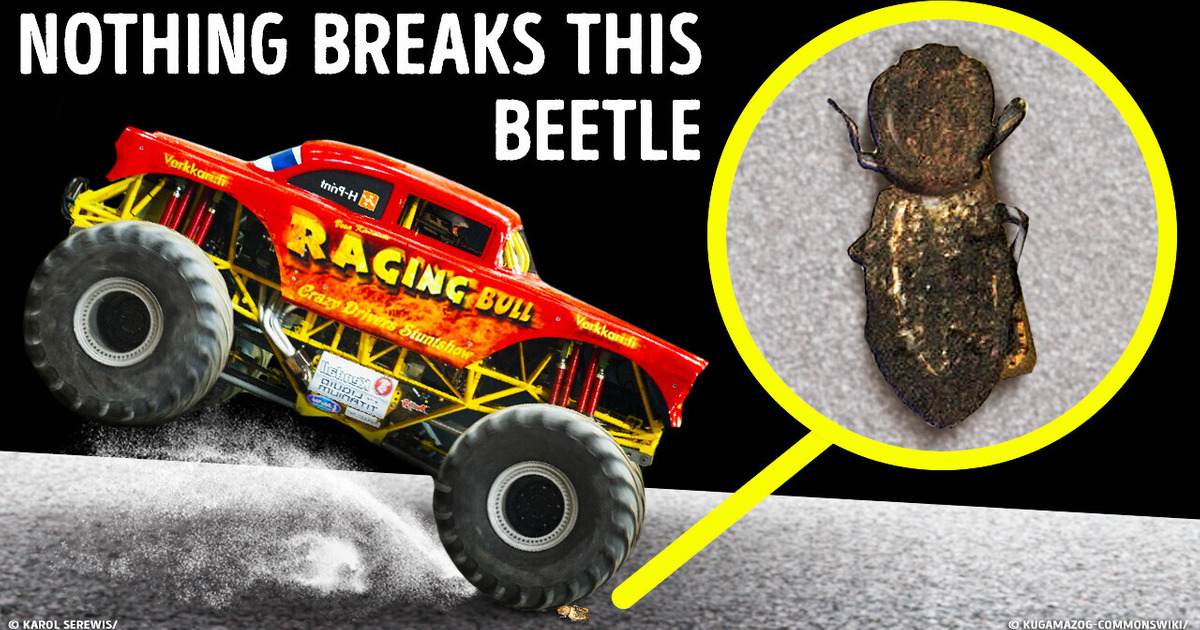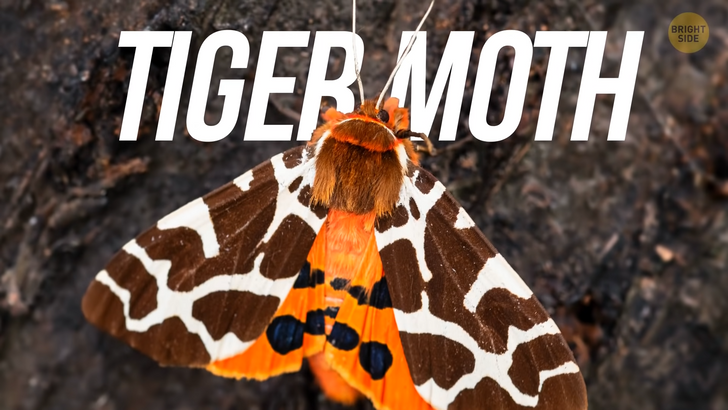16 Moments That Remind Us to Stay Kind Even If the World Turns Ice Cold


So, you drive along a desert road when suddenly you feel a bump like you hit something. You stop the car and look in the rearview mirror. Nothing. Weird. You get out of the car and take a good look at the road — and that’s when you see it.
A large black and white bug is hurrying across the road. It has a slightly flattened shape, as if... wait, did you just drive your car over it, and it’s still alive?

Yep, that’s the ironclad beetle for you. These hardy little fellas have an astonishingly sturdy carapace that protects them from incredible harm — even from a car at full speed. The bug’s shell is strong enough to withstand tons of pressure, and what’s inside the beetle is flexible and won’t easily be crushed either.
Even if you take a hammer and try to drive a needle through its body, chances are high you’ll just end up with a broken needle and a hale and hearty bug. Cockroaches are another species of survivors. Although a regular slipper is their worst nightmare, they can withstand crazy conditions: they aren’t much afraid of fire and can hold their breath for about 40 minutes underwater.
A cockroach can also go without food and water for about 9 days, so even if you take everything edible from your house and move to another place for a week, the pests will still greet you when you get back. (How was your trip? Did you get us anything?)

A tiger moth is called so because of its striped black and orange pattern, but it has a superpower allowing it to avoid its nemesis: the bat. Bats have weak eyesight and navigate with the help of ultrasonic waves — they basically scream at stuff and listen to the echo to find their way around obstacles and hunt for food.
Tiger moths have learned to listen to the ultrasound clicks and even produce their own to confuse the predators. In one experiment, a tiger moth was placed in a dark enclosed space with three bats. The insect got out of it unscathed — the bats just couldn’t find it.
The tiny humble froghopper is the living proof that whatever humans invent, they can’t beat nature to it. These bugs can leap the distance of 100 times their body length — that’s almost like fleas. Adult insects have spring-like legs that allow them such feats, but young froghoppers have little structures in their hind legs that look exactly like gears!
When they want to leap, they need to bring their legs in sync with each other, and that’s where the gears help them. When youngsters grow up and stop molting, the gears are lost, being unneeded any longer. Pea aphids might be small and unassuming, but they are, in fact, living solar batteries. They feed on plants and seem to have learned a few tricks from their lunch.

Unlike most living creatures who get them from food, aphids produce their own carotenoids — pigments useful for the immune system. It so happens that plants also use it to process sunlight, and aphids have mastered this trick as well. They can get energy directly from the sun and go about their day even without food, if needed.
You see it all around the world and sometimes swat at it, but you don’t know that the creature you want to get rid of is absolutely special. The annoying housefly has incredible eyes and sense of speed. Its blinkers allow it to see everything around it, 360 degrees, no matter how quiet and careful you are, it can see you creeping in on it with that clumsy swatter of yours. (Ha! Missed again, nyah, nyah!)
As for the sense of speed, flies feel everything in kind of slow motion, so no wonder they fly away so fast when you want to hit them. Bite the dust, human! Arachnophobia?, anyone? Well, if there’s any place to hide from spiders, it’s a pool of water, isn’t it? Not if you’re facing a fishing spider. It’s a hefty beast that can reach the size of your palm, and its name is not accidental: its favorite dish is fish.
The spider catches its prey by diving underwater, but its actual superpower is the ability to run on its surface. It creates small pockets of air with its feet that push the arachnid up, not letting it drown. And when the spider needs to go down, it just stops and dives.

One more spider you don’t want to mess with (aren’t they all?) is Darwin’s bark spider. It’s not as big and menacing as its fishing relative, but it just loves spinning its web. And when it does, it goes all in. Bark spiders are famous for throwing lines of their web across rivers and streams, and scientists are still not sure how they do that.
What’s worse, this web, pound for pound, is 25 times stronger than steel! It’s also very flexible and can be bent however you like even when it’s a thick rope. Termites are the scare of all things wooden and of ants too. When ants encroach on their territory, termites go out of their notorious mounds and give back more than they receive.
The insects are basically blind, but their heads are equipped with natural spitfire. They spit acid at their foes, driving them away quicker than they got there. Don’t even think of getting your fingers in the way of that acidic stream — it’s a really unpleasant feeling.
Speaking of spitting (as we were), bombardier beetles are the best at that. The look of this bug is menacing enough, but when it feels threatened, it will give out a loud pop and spray the enemy with boiling hot liquid. There’s a chamber inside the bug’s belly that keeps two substances for that.

When they mix before spraying, they react with each other and quickly get really hot. Even birds are in big trouble if they get into the beetle’s way, and other insects simply have no chance against it.
Parasitoid wasps are mind controllers of the insect world. They lay eggs inside other insects, especially roaches, and bend them to their will. The insect becomes placid and just lies there until the eggs hatch. And when they do, the wasps’ little ones take over control of its body and make it do their every bidding. Kinda terrifying, if you ask me.
Dung beetles have no psychic powers, but they don’t need them: they’re the most powerful heavy lifters in the world. Their favorite expression is “Been there, dung that”. No really. A single dung beetle can haul a load a thousand times its own weight. It’s like a person lifting ten elephants! These bugs need their namesake substance to eat and lay eggs into.
Yum! And they differ between each other: the most popular ones are rollers, but there are also tunnelers and dwellers. Rollers are the ones that make the famous balls; tunnelers dig right into the ground where they find food; and dwellers feel just fine sitting on top of their finds and not moving anywhere. King of the hill, if you will.

See that beautiful pink flower? It’s an orchid. And that similar one next to it? It’s an orchid mantis. These tricky insects have mastered the art of mimicry to excellence. They can hide in plain sight, and even the sharp eyes of birds of prey often can’t recognize them for what they are.
The mantis sits absolutely still, waiting for its prey to come closer, and when it does, the predator lunges at it at mind-numbing speed. After lunch, the mantis assumes its original position and waits for the next unwary insect to come by.
Desert locust is a bane of many crops because it comes in thousands at a time and eats everything that grows on land. One locust can’t do much harm because it’s just an overgrown grasshopper, but they typically don’t travel alone. Locusts are often pictured flying in a swirling cloud over a field and landing all at once.
That picture is pretty correct: these loud insects can fly dozens of miles at a time without rest, and they fly quite fast. But the most incredible thing about them is that locusts can keep up the same speed for the whole duration of their flight.

Unlike birds that depend on the wind, locusts can adjust their wings and control the amount of lift they generate. This helps them use the wind to their advantage and not be thwarted by it. Okay, time for me to bug out.











